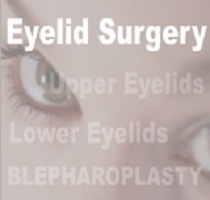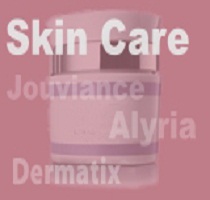Volume 1 • Issue 4
Blepharoplasty
For Functional and Cosmetic Indications

by David R. Jordan
M.D., F.A.C.S., F.R.C.S.(C)
INTRODUCTION
Having eyelid surgery to remove excess skin and fat is referred to as a “Blepharoplasty”. Motivation for this type of procedure may be either functional or cosmetic.
Functional blepharoplasty
As one ages, the upper and lower lid tissues begin to relax. These nonspecific changes may be accelerated by sun exposure, allergies or recurrent swelling and consist of stretching or senile elastosis of the skin. In some individuals, this process may be hereditary. The result is an excess of eyelid tissue referred to as “dermatochalasis”. Stretching and relaxation of the orbital septum will allow prolapse of the orbital fat into the eyelids. As a result, a “fullness” to the lid develops which increases over time. This excess lid tissue creates a tired look, may cause the patient to look older than they actually are, and may cause a heavy feeling or weight on the lid. With time, the excess lid tissues in the upper lid may hang over the lid margin and cause a visual field restriction. Patients may describe it as “something sitting there”, “like wearing a baseball cap”, or “like a shadow at the side”. In the lower lid, the excess skin and fat do not cause as much of a problem but can occasionally affect the bifocal portion of the glasses. Patients with excess skin in the upper lids causing a visual field restriction or in the lower lid affecting the bifocal segment have a functional defect that can be alleviated by surgical removal of the skin, and fat, leading to an improved and more comfortable field of view.


Top figure – 48 year old female pre-op.
Bottom figure – Post 4 lid blepharoplasty.


Top figure – 70 year old male pre-op.
Bottom figure – Post 4 lid blepharoplasty
Cosmetic blepharoplasty
Your eyes are often the first thing people notice about your face and are an important aspect of facial attractiveness. Unfortunately, with age, the upper and lower eyelids become “droopy” or “baggy” in appearance. Aesthetically, such conditions may detract from the overall attractiveness of ones eyes and cause a “tired” or “older” appearance. This situation bothers some individuals more than others (female > male) and at different ages. Removal of the excess skin and fat can restore a younger, more rested appearance.
Preoperative consideration
A preoperative ophthalmologic examination is essential, to document the visual acuity, baseline tear function, tear film stability, strength of lid closure, symmetry of palpebral aperatures, previous lid incisions, etc. The pre-existence of dry eyes, residual facial palsy, lid closure problems from previous surgery or ptosis will have a definite bearing on the extent of the lid surgery. .
For those considering surgery for functional reasons, a visual field test is required. If the visual field shows a reduced peripheral field of view, the surgery may be covered by OHIP. Preoperative photos may also be required for preauthorization.
In the cosmetic patient, it is essential to establish what they find bothersome in their appearance and what they expect surgery to accomplish. This process can be aided by handing the patient a mirror and asking them to point out what they would like corrected. Patients may point out skin discoloration, deep creases, cheek fullness and other features that may not be correctable by eyelid surgery alone.
Blepharoplasty is able to remove the bulges created by fat herniation and excess skin that is becoming redundant. Patients need to know they have to have some skin available to allow proper eyelid opening and closing. Enough skin has to remain to allow this. Many patients want “all” the fine lines removed on their lids (especially lower lids and crows feet). With skin removal by scalpel, the fine lines will diminish in their appearance but to remove them all, may prevent normal eyelid closure. Laser skin resurfacing is more effective in removing the fine lines than scalpel but even with laser it may not be possible to remove all of them. This is especially so in the crows feet area which may display a lot of wrinkling, especially with facial expression.
The goal of surgery is to remove excess wrinkles and fat. The patients look more alert and healthy, less tired and generally have a younger, more rested appearance. Surgery should allow the eyelids to open and close properly without any distortion or change in the natural almond-shaped lid contour and, with incisions that remain hidden.


Top figure – 45 year old female pre-op.
Bottom figure – Post 4 lid blepharoplasty


Top figure – 35 year old oriental male pre-op.
Bottom figure – Post upper lid blepharoplasty with re-creation of Caucasian lid fold.
Surgery
Many different specialists (of varying qualifications) perform this type of surgery including Ophthalmologists, Plastic Surgeons, Otolaryngologists and Dermatologists. Cosmetic (and functional) eyelid surgery is commonly performed by Ophthalmic Plastic and Reconstructive Surgeons who are Ophthalmologists that have completed one or two additional years specializing in treatment of problems that involve the eyelids, lacrimal system, orbit and adjacent facial structures. The complications associated with Blepharoplasty are eye related. It makes sense to have the surgery done by someone who has a thorough knowledge of the eye and is able to manage those potential eye problems that occasionally occur.
Blepharoplasty surgery is an out-patient procedure performed under local anesthesia, with sedation if desired. During surgery, incisions are made in the natural folds of the eyelid so they are almost invisible after proper tissue healing.
If only fatty tissue needs to be removed from the lower lids and not any skin, the surgery can be performed from behind the eyelid. This is known as “transconjunctival blepharoplasty”.
In cases where the eyebrows are also droopy, a procedure to elevate the eyebrow may be appropriate. This procedure, known as a “brow lift”, may be done directly above the eyebrow within the forehead creases or by an endoscopic approach.
After surgery
Following surgery, cold compresses for 3 to 4 days and antibiotic ointment, followed by warm compresses are used to help the healing process. Eye patches are not required. Discomfort is usually minimal and handled by acetaminophen. Aspirin containing compounds should be avoided because of their tendency to increase bruising. Most individuals will have swelling and some degree of bruising that will settle over the first 1 to 3 weeks. Patient healing however, is variable with some healing much quicker than others. Complete tissue healing usually occurs by 2 to 3 months. For upper lid blepharoplasty, one week off work is average while 2 weeks is best in those having 4 lid blepharoplasty. Makeup can be applied to help hide residual bruising after one week.
Complications
After surgery, the patient may temporarily experience minor discomfort, tightening or numbness of the lids, swelling, bruising and dryness of the eyes. The eyelid blink rate temporarily slows down after the surgery and, as a result, the eyes may have a gritty or sandy feeling. Artificial tears during the day and lubricating ointment at night are commonly used to keep the eyes moist during the healing process. As the incisions heal and the eyelid mobility returns to normal, these symptoms will usually resolve. Excessive pain, bleeding, and infection are very uncommon. Blurry vision may occur during the healing period as a result of the decrease in eyelid blink rate or ointment getting into the eye but should return to normal in one to two weeks. Loss of vision has been reported following this surgery but fortunately is extremely rare and very few blepharoplasty surgeons will ever encounter it. The exact incidence is unknown but is probably in the order of 1 in 2,500, (0.04%). The cause is usually deep orbital hemorrhage likely secondary to excess traction on the fat.
Once the healing process has settled (average 2 to 3 months), if there is any lid asymmetry, a touchup procedure may be required in less than 5% of patients.
SCALPEL vs. LASER
Both have advantages and disadvantages. In general, for the upper lids, there is really not much difference in the end result as the same amount of skin is being removed. For the lower lids if there is a lot of redundant skin, scalpel is beneficial. If there are mainly fine lines, laser is more effective. Laser on the lower lids may however, have a longer recovery period, depending on the skin type and laser used.
SUMMARY
Blepharoplasty surgery can provide both functional and cosmetic improvement with minimal risk of serious problems. Most patients are quite pleased with the results of their eyelid surgery.
If you have any questions regarding the topics of this newsletter, or requests for future topics of InSight, please contact Dr. David R. Jordan office by telephone at (613) 563-3800.







